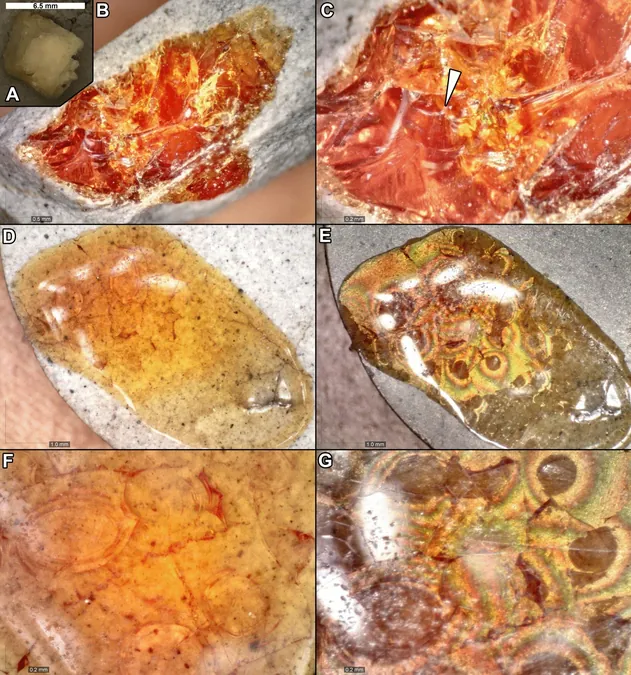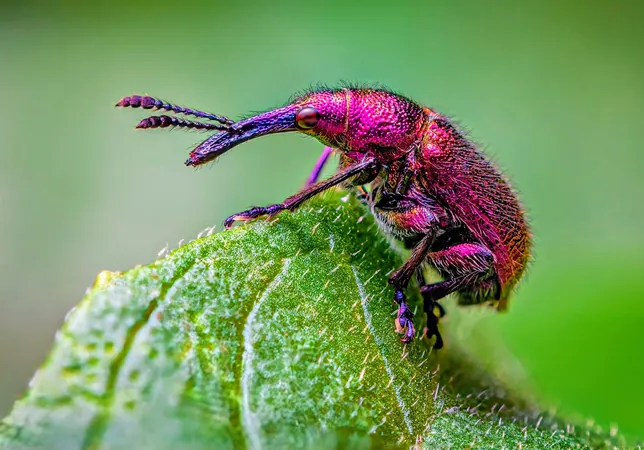
Scientists Develop Lab-Grown Resin That Mimics Amber for Groundbreaking Fossil Research
2025-03-26
Author: Ming
Introduction
In a groundbreaking advancement in the study of paleontology, researchers at the Field Museum in Chicago, alongside the Foundation for Scientific Advancement, have successfully created an amber-like resin in the lab. This synthetic material closely mimics natural copal and amber, both of which are fossilized tree resins renowned for their exceptional ability to preserve ancient plant and animal life over millions of years.
Significance of Amber and Copal
Amber and copal are highly valued in scientific research, as they encapsulate fragile specimens, offering a unique window into Earth’s distant past. However, the rarity of these natural inclusions means that destructive analysis on actual amber is frequently avoided; any sampling could irreparably damage these precious artifacts.
The Revolutionary Lab-Made Resin
The new lab-made resin serves as an alternative, allowing scientists to conduct destructive tests without the risk associated with using genuine amber. This synthetic analog could revolutionize the way researchers study fossilization processes, enabling them to refine and validate chemical analysis methods crucial for understanding the conditions and chemical changes that occur within natural resins.
Study on Fossil Resin Formation
Previous studies have highlighted that the formation of fossil resins involves the loss of volatile compounds and the polymerization of resin constituents. Yet, replicating these conditions in a lab has proven challenging. To address this, the team conducted an experiment titled "Experimental maturation of pine resin in sediment to investigate the formation of synthetic copal and amber," published in Scientific Reports.
Innovative Approach and Methodology
In their innovative approach, scientists collected fresh pine resin from Mountain Pine (Pinus mugo) and Scots Pines (Pinus sylvestris) within the Chicago Botanic Garden. They encapsulated the resin in clay and subjected it to high pressure—between 159 to 241 bar—and heated it to temperatures ranging from 130°C to 150°C for durations of 19 to 41 hours. This method sought to mimic the natural geological processes that these resins would experience over geological time scales, thus accelerating their transformation into amber-like materials.
Results and Observations
Microscopic examinations of the synthetic resin revealed a fascinating transformation from a pale, opaque substance to brittle, translucent lumps featuring hues of yellow, orange, and brown. Notably, the resin displayed characteristics common to both copal and amber, such as conchoidal fractures and internal air pockets.
Chemical Analysis and Transformations
Moreover, chemical analysis using infrared spectroscopy indicated significant transformation, with a marked decrease in carbonyl signals—similar to those observed in real copal and Eocene Baltic amber. This alteration hints at comparable chemical aging phenomena occurring in the synthetic resin, reinforcing the similarity between laboratory-created and naturally produced resins.
Future Implications and Research Directions
The outcomes of this research not only demonstrate how controlled laboratory conditions can drive the loss of volatile components while preserving stable resin elements but also provide a platform for future experiments. Researchers are eager to refine the parameters of pressure and temperature further and to explore resin sources from various tree taxa known for producing polymerizable diterpenoids. This could ultimately lead to a synthetic resin that more closely resembles the chemical structure of natural amber.
Conclusion
The implications of these findings could significantly elevate our understanding of paleoenvironments and fossil preservation, offering researchers new tools to unlock the mysteries of our planet's biological history. As studies in this area continue, the potential applications of lab-grown resin might reach far beyond the realm of fossil research, possibly influencing fields such as material science and conservation.
Stay Tuned
Stay tuned for more updates as this fascinating research unfolds!





 Brasil (PT)
Brasil (PT)
 Canada (EN)
Canada (EN)
 Chile (ES)
Chile (ES)
 Česko (CS)
Česko (CS)
 대한민국 (KO)
대한민국 (KO)
 España (ES)
España (ES)
 France (FR)
France (FR)
 Hong Kong (EN)
Hong Kong (EN)
 Italia (IT)
Italia (IT)
 日本 (JA)
日本 (JA)
 Magyarország (HU)
Magyarország (HU)
 Norge (NO)
Norge (NO)
 Polska (PL)
Polska (PL)
 Schweiz (DE)
Schweiz (DE)
 Singapore (EN)
Singapore (EN)
 Sverige (SV)
Sverige (SV)
 Suomi (FI)
Suomi (FI)
 Türkiye (TR)
Türkiye (TR)
 الإمارات العربية المتحدة (AR)
الإمارات العربية المتحدة (AR)